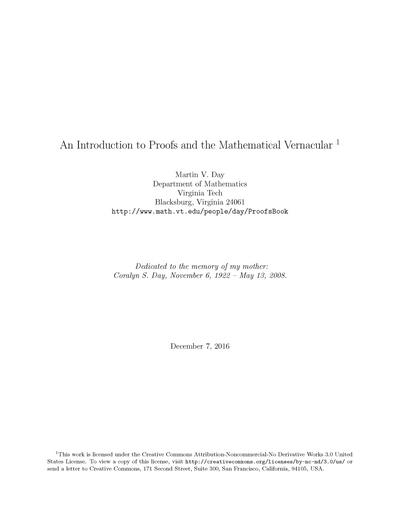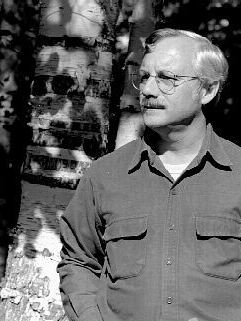
An Introduction to Proofs and the Mathematical Vernacular
This textbook helps students make the transition from being a user of mathematics to someone who can critically read and evaluate mathematical statements and being able to write mathematical explanations in clear, logically precise language.
Tag(s): Proofs
Publication date: 07 Dec 2016
ISBN-10: n/a
ISBN-13: n/a
Paperback: 147 pages
Views: 12,835
Type: Textbook
Publisher: n/a
License: Creative Commons Attribution-NonCommercial-NoDerivs 3.0 United States
Post time: 20 Dec 2016 05:10:00
An Introduction to Proofs and the Mathematical Vernacular
 This textbook helps students make the transition from being a user of mathematics to someone who can critically read and evaluate mathematical statements and being able to write mathematical explanations in clear, logically precise language.
This textbook helps students make the transition from being a user of mathematics to someone who can critically read and evaluate mathematical statements and being able to write mathematical explanations in clear, logically precise language.
Publication date: 07 Dec 2016
ISBN-10: n/a
ISBN-13: n/a
Paperback: 147 pages
Views: 12,835
Document Type: Textbook
Publisher: n/a
License: Creative Commons Attribution-NonCommercial-NoDerivs 3.0 United States
Post time: 20 Dec 2016 05:10:00
Share — copy and redistribute the material in any medium or format
The licensor cannot revoke these freedoms as long as you follow the license terms.
Click here to read the full license.
Martin V. Day wrote:In the standard year (or two) of university calculus and differential equations courses you have learned a lot of mathematical techniques for solving various types of problems. Along the way you were offered "proofs" of many of the fundamental relationships and formulas (stated as "theorems"). Perhaps occasionally you were asked to "show" or "prove" something yourself as a homework problem. For the most part, however, you probably viewed the proofs as something to be endured in the lectures and skimmed over in the book. The main emphasis of those courses was on learning how to use the techniques of calculus, and the proofs may not have seemed very helpful for that.
Historically, techniques of calculation were the principal concern of mathematics. But as those techniques became more complex, the concepts behind them became increasingly important. You are now at the stage of your mathematical education where the focus of your studies shifts from techniques to ideas. The goal of this book is to help you make the transition from being a mere user of mathematics to becoming conversant in the language of mathematical discussion. This means learning to critically read and evaluate mathe- matical statements and being able to write mathematical explanations in clear, logically precise language. We will focus especially on mathematical proofs, which are nothing but carefully prepared expressions of mathematical reasoning.
Resources:
Tweet
About The Author(s)
Professor (retired) in the Department of Mathematics at Virginia Tech. His recent interests concern the structure of differential games and control problems arising in the fluid or risk-sensitive / large deviations limit of queueing networks.

Professor (retired) in the Department of Mathematics at Virginia Tech. His recent interests concern the structure of differential games and control problems arising in the fluid or risk-sensitive / large deviations limit of queueing networks.